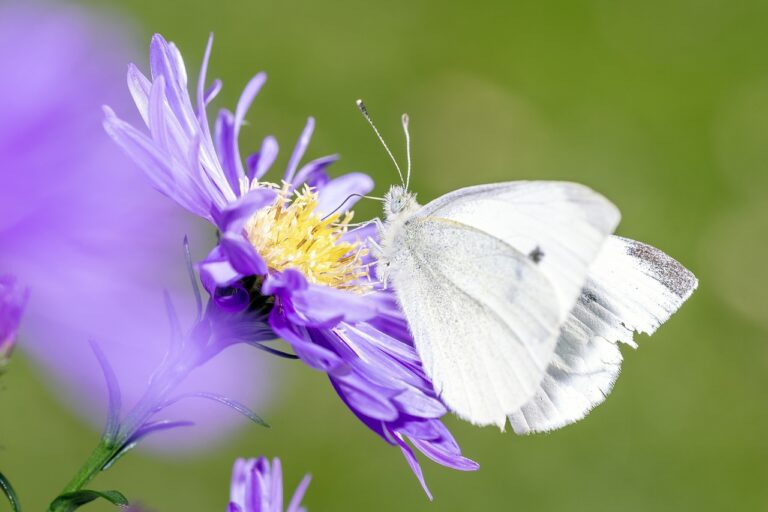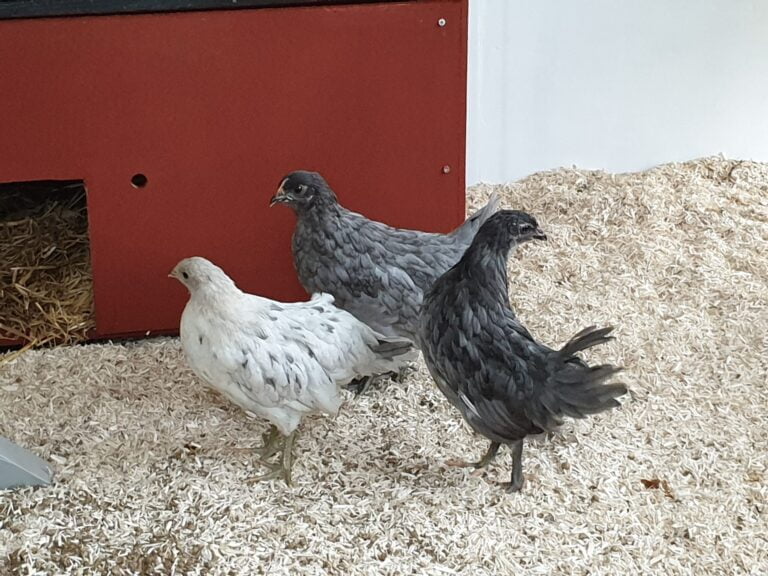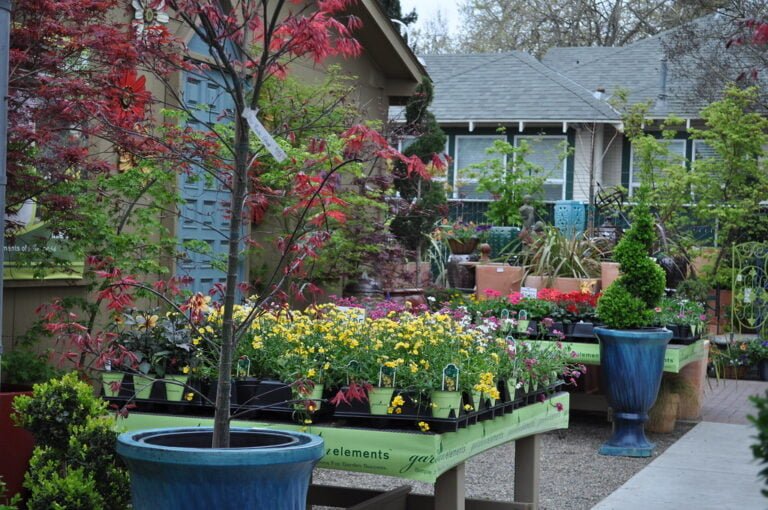Exploring the Different Types of Spider Plants
Exploring the diverse world of spider plants, you’ll come across a variety of enchanting types. Variegated varieties, like the Chlorophytum comosum Vittatum, beautify spaces with green leaves and white stripes, thriving in bright, indirect sunlight. The Bonnie Spider Plant showcases stunning patterns and air-purifying qualities, ideal for low-maintenance indoor gardens. The Hawaiian Spider Plant, originating from Hawaii, flaunts dark green foliage with vibrant yellow-lime accents, thriving in bright, indirect light. The Zebra Spider Plant, with its green and white striped leaves, brings visual interest to indoor settings, while being simple to care for. Explore more fascinating spider plant types for your plant collection.
Variegated Spider Plant Varieties
Variegated Spider Plant varieties, characterized by their striking green leaves adorned with a single off-white stripe, are renowned for their ability to flourish in bright, indirect sunlight. These plants, scientifically known as Chlorophytum comosum Vittatum, are a popular choice for indoor plant enthusiasts due to their elegant appearance and ease of maintenance. The green leaves of the Variegated Spider Plant create a visually appealing contrast with the off-white stripe running down the center, making them a stylish addition to any space.
In terms of care, Variegated Spider Plants require watering every four to five days to make sure they remain healthy and vibrant. Their growth can reach between 12-24 inches in both height and width with proper care, making them a versatile option for indoor plant decor. This plant’s adaptability to various environments and its low maintenance nature add to its appeal for plant lovers of all experience levels.
The Variegated Spider Plant’s unique foliage and resilience to different light conditions make it a sought-after choice for both beginner and seasoned plant enthusiasts. With the right care and attention, these plants can thrive and bring a touch of greenery to any indoor setting effortlessly.
Unique Features of Bonnie Spider Plant
I’ve observed that Bonnie Spider Plants exhibit striking variegated leaf patterns, with a mix of light yellow and green that sets them apart from other spider plant varieties. Beyond their aesthetic appeal, these plants are renowned for their air-purifying qualities, making them a functional and visually pleasing addition to any indoor environment. With their compact size and ability to thrive in various light conditions, Bonnie Spider Plants offer a unique blend of beauty and practicality for plant enthusiasts.
Variegated Leaf Patterns
Known for its striking variegated leaf patterns, the Bonnie Spider Plant boasts green foliage adorned with delicate light yellow stripes. This unique combination of green and cream colors adds a touch of elegance to any space. The compact nature of the Bonnie Spider Plant, growing to a height of 6-8 inches and a width of 10-12 inches, makes it an ideal choice for indoor areas with limited space. Its low-maintenance requirements, thriving in bright indirect light or partial shade, and needing watering every five to seven days, make it a hassle-free plant for both beginners and experienced gardeners. The Bonnie Spider Plant’s attractive variegated leaves make it a popular option among plant enthusiasts seeking visually appealing additions to their indoor plant collection.
Air-Purifying Qualities
With its remarkable ability to purify the air by effectively removing toxins like formaldehyde and xylene, the Bonnie Spider Plant stands out for its exceptional air-purifying qualities. As a popular choice for indoor gardens, this variety of Chlorophytum comosum is an excellent air purifier, making it a valuable addition to any living or working space. The Bonnie Spider Plant is easy to grow and maintain, requiring moderate sunlight and watering, which makes it a boost-free plant for those looking to elevate their indoor environment. Its compact size, reaching up to 8 inches tall, allows for versatile placement in various settings. The elegant green and light yellow leaves not only contribute to its air-purifying capabilities but also add a touch of natural beauty to any room.
Characteristics of Hawaiian Spider Plant
Originating from the lush landscapes of Hawaii, the Hawaiian Spider Plant boasts a striking yellow-lime and cream coloration on its leaves, making it a distinctive addition to any indoor space. This tropical variety of spider plant thrives in bright, indirect light, making it perfect for areas in your home or office that receive ample natural light. Its low maintenance needs add to its appeal, as it only requires watering every seven to eight days, allowing for easy care without compromising its beauty.
When fully grown, the Hawaiian Spider Plant can reach heights of 12-24 inches and widths of 12-36 inches, creating a lush and vibrant presence in any room. The dark green foliage with vibrant yellow-lime accents adds a pop of color and a touch of the tropics to your indoor environment. Its elegant appearance and minimal care requirements make it an excellent choice for those looking to introduce a bit of Hawaii into their living or working spaces.
Zebra Spider Plant: A Distinctive Choice
Emerging from the discussion of Hawaiian Spider Plants, the Zebra Spider Plant stands out with its striking green and white striped leaves, making it a distinctive choice for indoor plant enthusiasts. The Zebra Spider Plant, scientifically known as Chlorophytum laxum Zebra, is characterized by its unique foliage pattern, which adds a touch of elegance to any space. This type of spider plant typically reaches a height of about 12 inches and can spread up to 20 inches wide, creating a lush and vibrant display.
One of the key factors contributing to the popularity of Zebra Spider Plants is their preference for bright, indirect light. Placing them in locations where they can receive ample but filtered sunlight will ensure optimal growth and development. Additionally, these plants require regular watering, typically every five to seven days, to maintain their health and vigor. Their care routine is relatively straightforward, making them suitable for both experienced plant owners and beginners.
The green and white striped leaves of the Zebra Spider Plant make it a visually appealing choice for various indoor settings. Whether used as a standalone plant or as part of a botanical arrangement, these plants are sure to captivate with their distinctive appearance. Consider adding a Zebra Spider Plant to your collection to enjoy the beauty and charm it brings to your living space.
Vittatum Spider Plant Insights
Exploring the complexities of the Vittatum Spider Plant, one can appreciate its distinct characteristics and care requirements that contribute to its charm as an indoor plant choice. The Vittatum Spider Plant, scientifically known as Chlorophytum comosum Vittatum, showcases elegant green leaves with a single off-white stripe running down the center, adding a touch of sophistication to any space. To guarantee its best growth, this variety thrives best in bright, indirect sunlight.
When it comes to watering the Vittatum Spider Plant, a vital schedule is essential. It is recommended to water this plant every four to five days to maintain its health and vibrancy. Proper watering practices play an essential role in preventing issues like root rot and dehydration, which can hinder the plant’s growth and appearance.
Mature Vittatum Spider Plants can reach heights and widths ranging between 12 to 24 inches, making them a versatile and visually appealing indoor plant option. With its striking green and off-white striped foliage, this plant can truly stand out in any indoor garden setting. By providing adequate light, regular watering, and sufficient space for growth, the Vittatum Spider Plant can flourish and become a beautiful addition to your plant collection.
Lesser-Known Spider Plant Varieties
I’ve encountered some intriguing lesser-known spider plant varieties that highlight the plant’s assorted characteristics. From the small Dwarf Spider Plant with its lively green and yellow leaves to the impressive Fire Flash Spider Plant showcasing green and orange foliage, each distinct species offers a unique appeal. These uncommon spider plant varieties bring a hint of botanical fascination to any indoor garden.
Rare Spider Plant Varieties
Among the lesser-known Spider Plant varieties, there are several rare types that exhibit unique characteristics and are ideal for various environments. The Reverse Spider Plant stands out with its green middles and pale yellow borders, renowned for its air-purifying abilities. The Bichetii Grass Spider Plant, resembling the Variegated spider plant, is perfect for centerpieces, reaching up to a foot in height. The compact Atlantic Spider Plant, with its green and white leaves, is well-suited for small spaces. Thriving in full to partial sun conditions, the White Lightning Spider Plant displays striking green and white leaves. Finally, the Dwarf Spider Plant, with its green and yellow leaves, grows up to 6 inches tall, making it a great choice for tiny spaces.
Unique Spider Plant Species
Shifting from the conversation about uncommon Spider Plant varieties, we now explore the world of exceptional Spider Plant species, covering lesser-known types distinguished by their unique features and adaptability in various environments. The Curly Spider Plant, known for its curly leaves, adds a playful touch to any space. The Solid Green Spider Plant boasts deep green foliage that brings a sense of tranquility to its surroundings. For those seeking a pop of color, the Variegated Bonnie Spider offers leaves with striking white margins. The Ocean Spider Plant thrives in moderate light conditions, showcasing green leaves with a hint of blue. Finally, the Fire Flash Spider stands out with its fiery red foliage, making it a vibrant addition to any collection.






